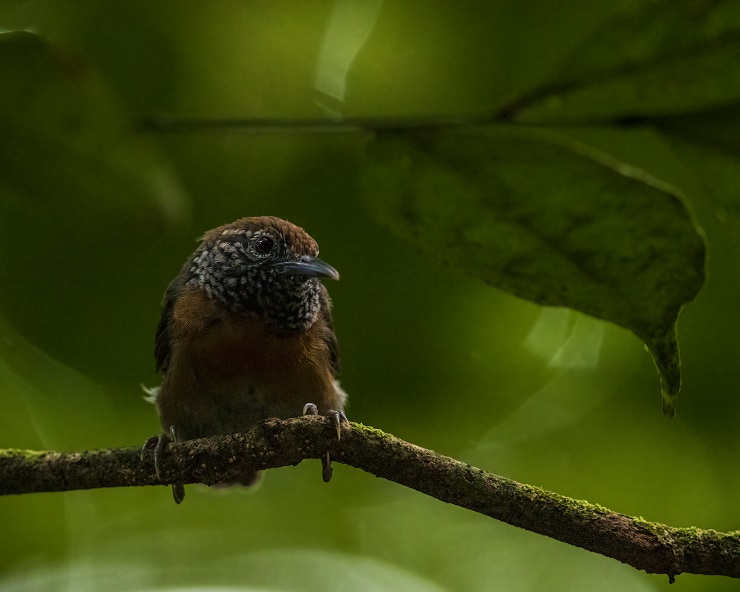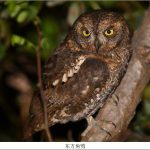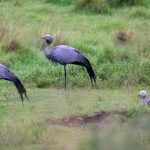
As we all know, birding is very much a lottery. Visiting the same place repeatedly delivers a different cast of characters each time. Such is nature. Late yesterday evening we took a walk along an often-traversed trail through the Main Ridge Forest Reserve here on Tobago. I’m accustomed to seeing nothing while walking along some of these trails, but apart from a Golden-olive Woodpecker knocking the trunk of a palm tree at the entrance, it seemed extra quiet. Even the bugs were scarce!
Sure there were birds. In the distance. It was as if they were all called to a very important meeting that was just about to end. With release and refreshments beckoning, there was a distant excited chatter. I was hearing some Yellow-legged Thrushes bickering in the canopy, but the light had already begun to fade. I thought there was about an hour of light remaining – but the weather had other ideas. Living up to its name, the rainforest conjured thick clouds that enveloped us no more than twenty minutes after we arrived. Shafts of warm evening light were replaced by cool shadows and trembling leaves. A White-necked Thrush vaulted from the bed of a small stream to an eye-level branch, pausing momentarily before continuing its journey upward to a more obscure perch; from where it lounged for some time. I waited for it to hop somewhere accessible but that never happened.
A few bends later, I began hearing some Blue-backed Manakins feeding in the sub-canopy. Gradually I was able to get a visual on some of the birds as they flitted about. I managed to get a half-decent look at an immature male as well as a couple of adult males; they were making brief sallies to pluck berries in flight. But it was getting darker.

Immature male Blue-backed Manakin, tons of fun locating that sliver of bright red in the sea of green.
My fortunes began to swing with the passage of time, as I guess all good pendulums tend to do. That White-necked Thrush I patiently waited on earlier showed up again, this time sitting in plain view.

White-necked Thrush

The encroaching darkness.
Alas – thick clouds in the rainforest only mean one thing: rain. Sure enough the drops began to find their way through the vegetation and we turned around. It was basically almost dark by this point. Even though finding birds may have been difficult, the rainforest itself is a magical entity – especially at twilight. Pausing momentarily to marvel at the change in weather within the forest, a tiny, brown bird flew in and perched on a small tree directly in front of us. I wheeled my focus button on my binoculars all the way back before putting it to my eyes, it was that close. Amazingly, our little brown job was a Rufous-breasted Wren!
Don’t get me wrong, Rufous-breasted Wrens are fairly common across both Trinidad and Tobago. They have a musically rich whistle that typically is one of the first sounds one hears when entering the forest. I’m sure in many of my accounts on this blog this species appears in the early paragraphs. But never a photograph! They’re consummate skulkers, the embodiment of heard-but-not-seen birds. On a rare occasion, they’d materialize on an open branch, only to skip just out of view before you realize what’s happening.
Time stopped for me at this moment. I flipped my camera on and began to edge backwards. I took aim. Too close. Another step back. Still too close. Soon, I was backed up all the way to the embankment on the other side of the trail – incredibly the bird remained still. Curious about me, perhaps, but also simply another being, looking around at the forest just as we were a few seconds prior.

Safe to say I now have more photographs of Rufous-breasted Wren than I ever had before.

I photographed this bird until my arms began to shake. All the while it moved a grand total of three times – vastly differing from all my prior experiences with this species!

Experiences like this underscore the importance of always trusting the process, we never know what is coming our way or what we will ultimately cross paths with.











Well done, and well written! ?
Thanks!